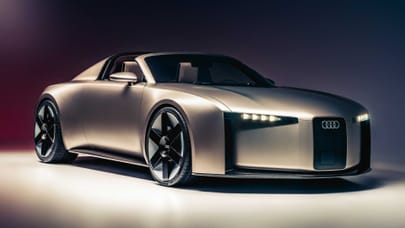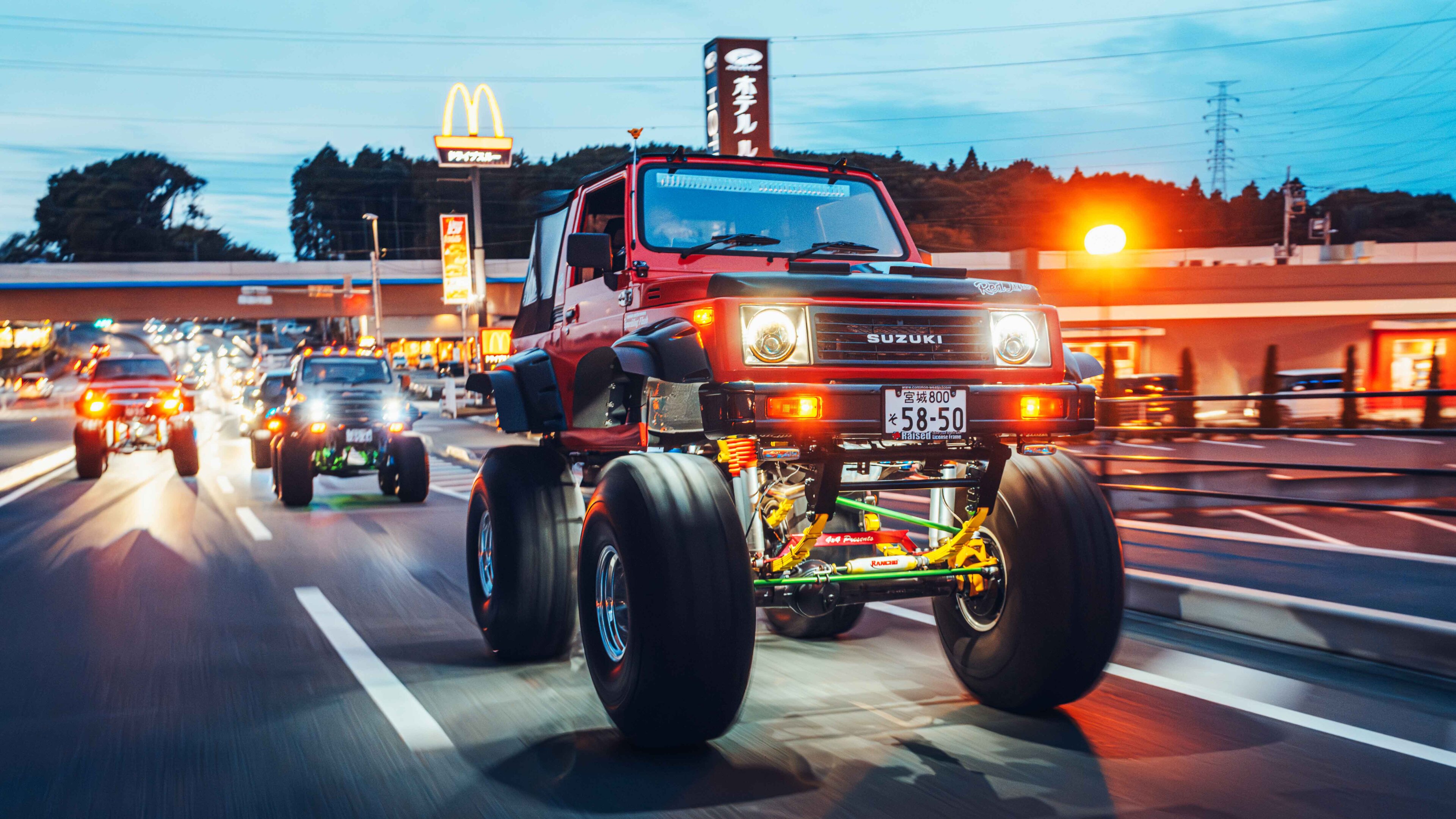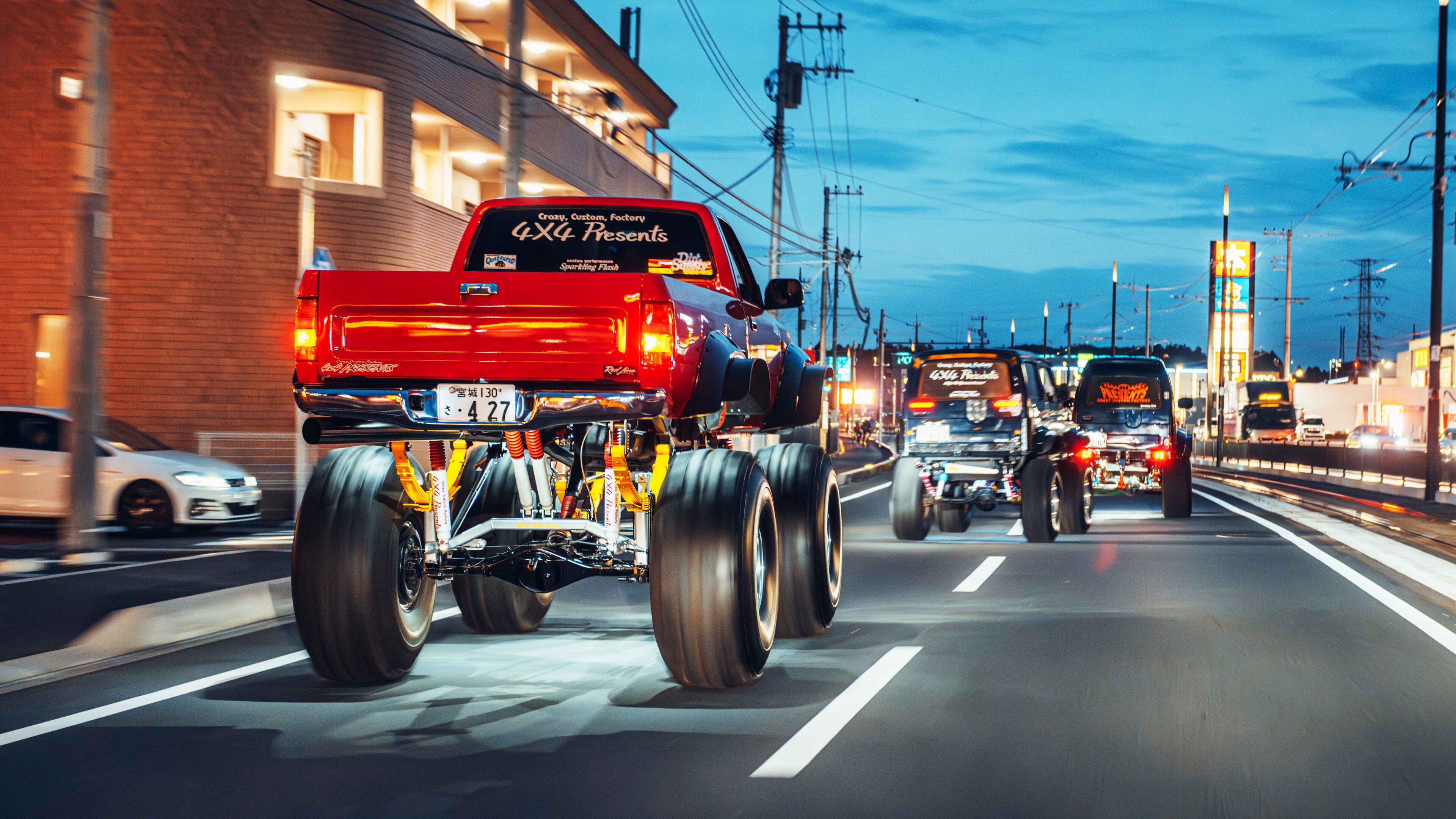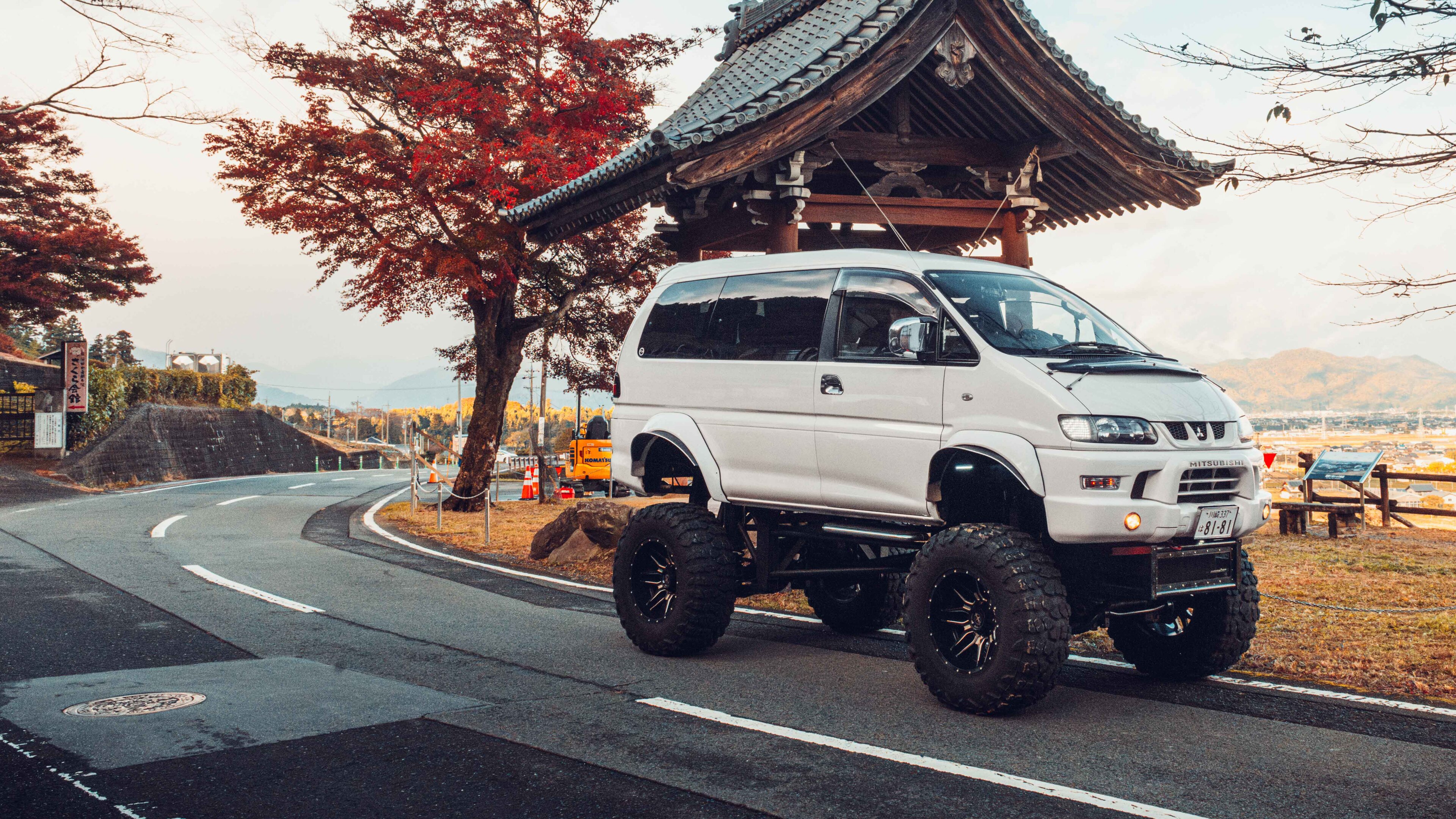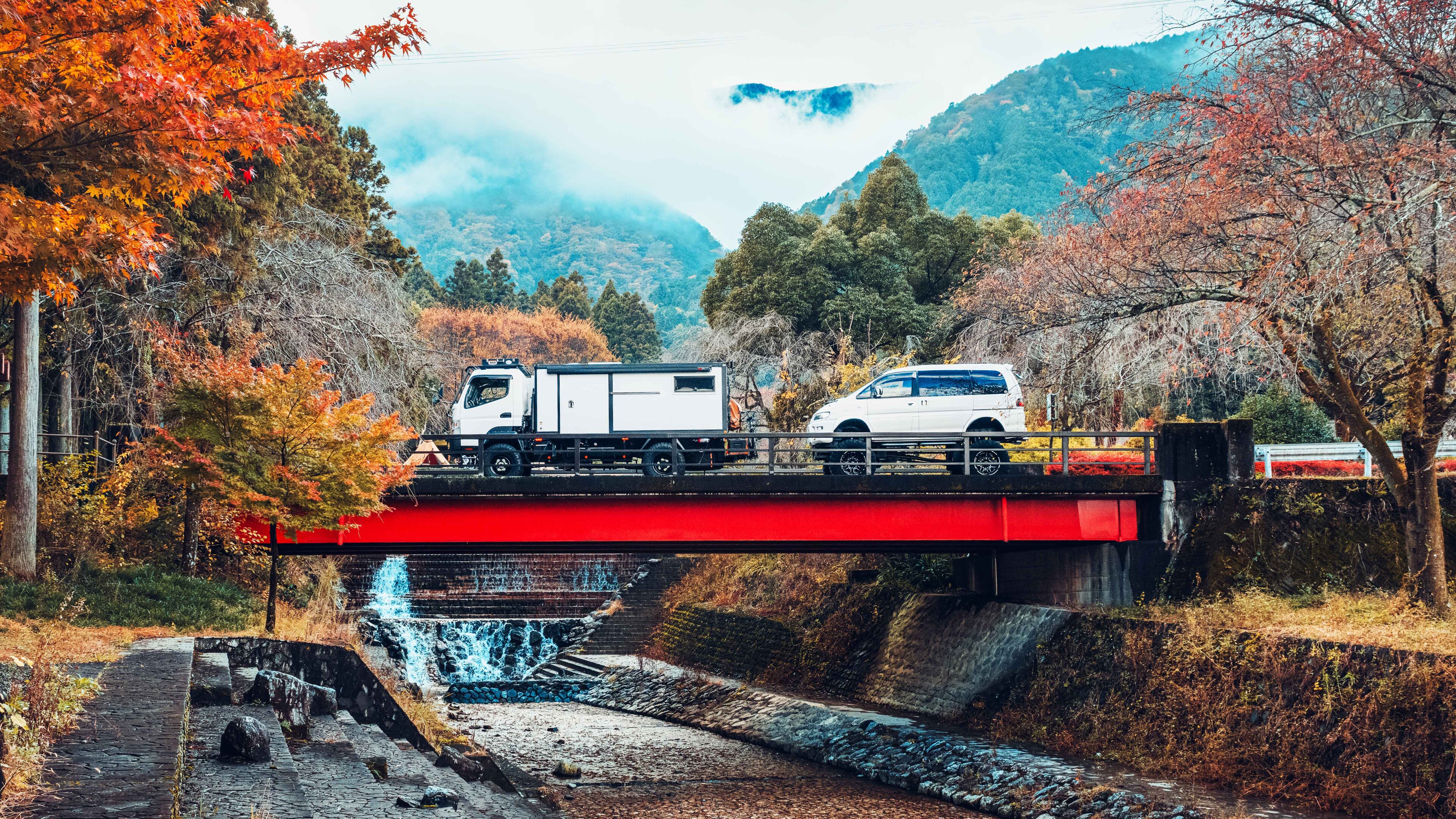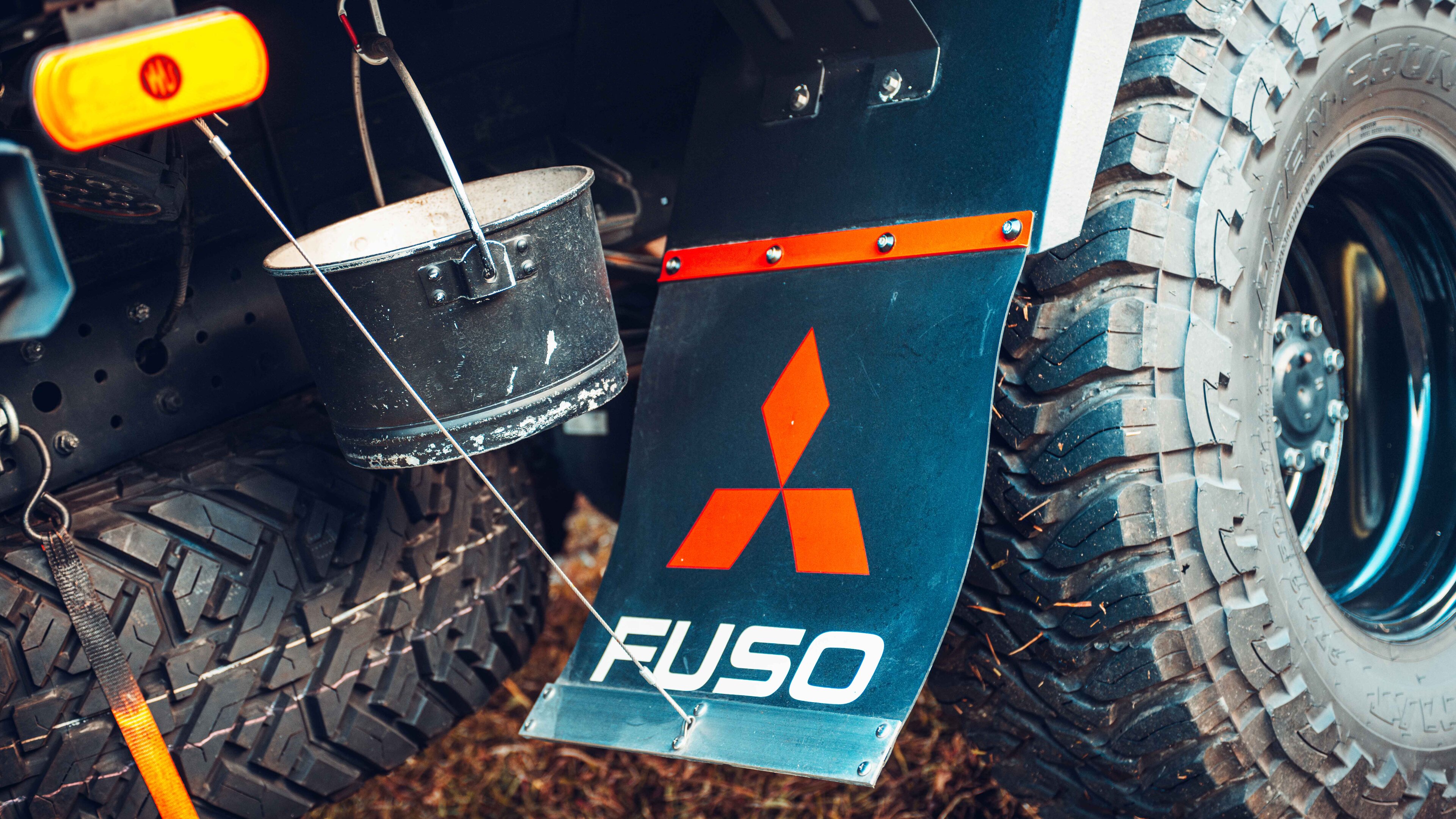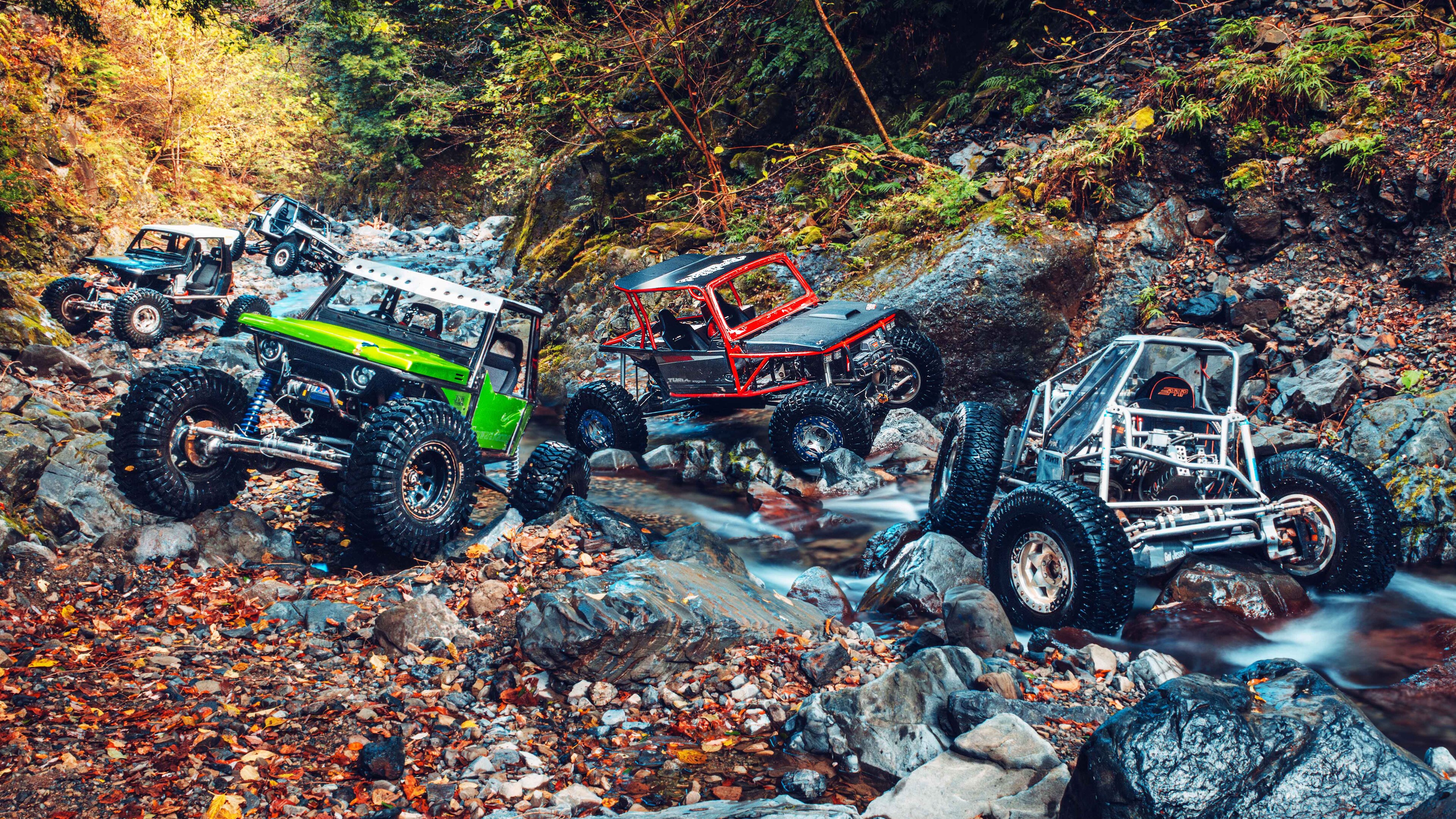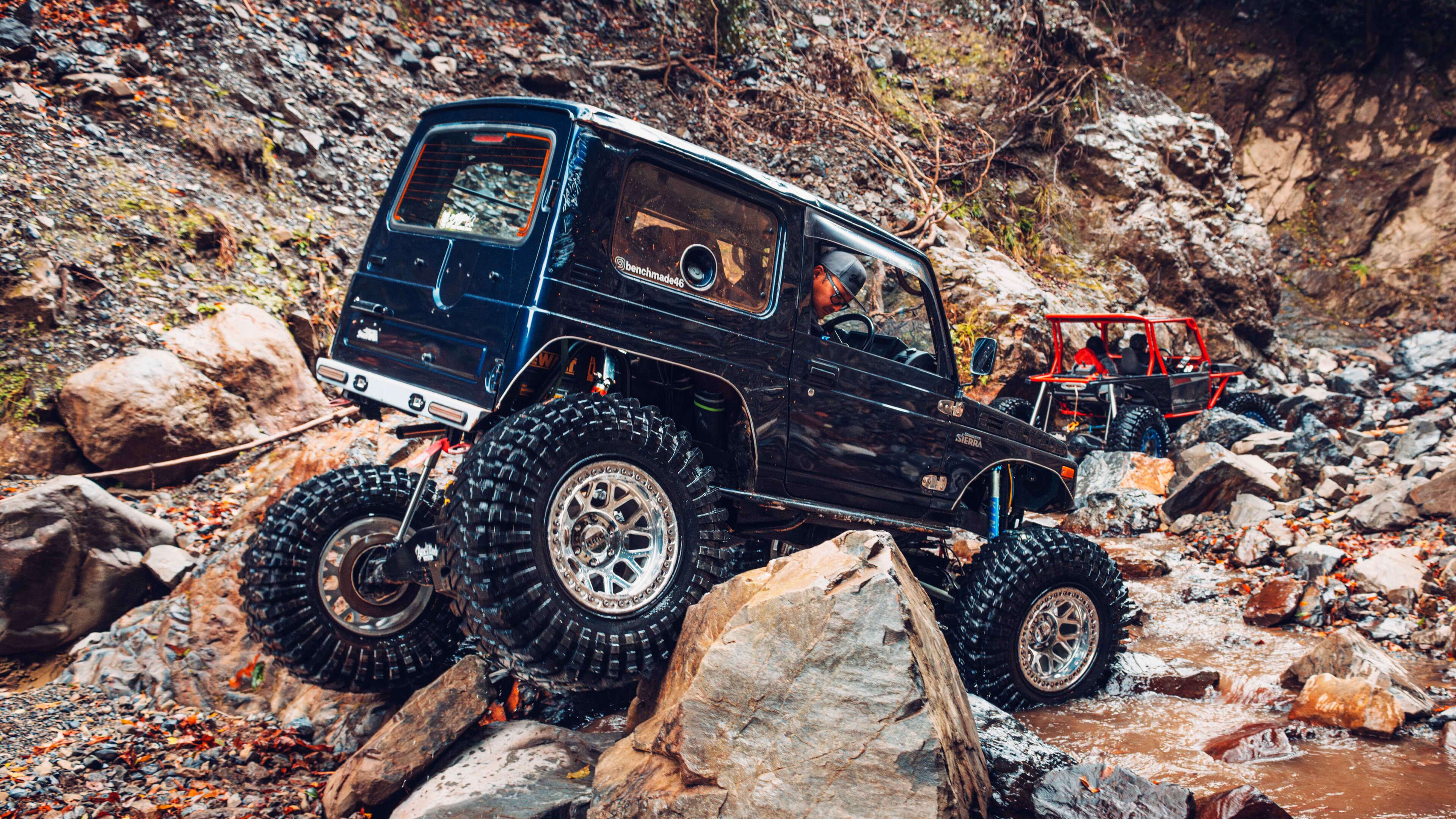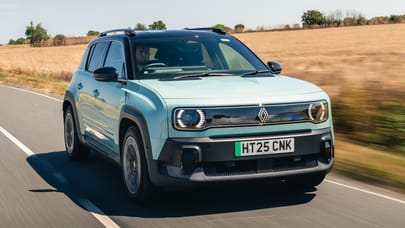
4x4 rising: exploring Japan's wild and wonderful off-roaders
When it comes to going off the beaten path, the Japanese don't do things by the book...
We’re crawling along a river bed, a convoy of Jimnys and Buggies unperturbed by boulders and icy torrents. “It doesn’t look like Japan, right?” a driver yells, while wrestling his Suzuki over Martian terrain surrounded by mountains covered in an explosive display of autumnal colours. He’s definitely been on the sake, because you couldn’t get any more Japanese than this.
What he means, I think, is that despite Japan building some of the world’s greatest off roaders, and the country being 75 per cent mountain and 65 per cent dense forest, off roading isn’t as popular as you might think. Not compared to Australia, the UK or US.
Japan’s 27 million acres of national parks pales in comparison to the USA’s 840 million and gives you an idea of the restrictions faced when the desire to bash some bogholes takes hold. Thankfully, there are more ways than one to enjoy your 4x4, and the Japanese are extremely good at problem solving. They’ve figured out ways to get their 4x4s higher, further and more comfortable than they were ever designed to be...
Words & photography: Toby Thyer
Chapter one: City slickers
Google ‘silly cars – Japan’ and you’ll be fed images of kei trucks and kaido racers, or maybe even those Mario Kart go-karts that whizz around central Tokyo. But those are all white belt, this lot are 10th degree black belt bizarre. The locals call them ‘high lift’. Inspired by American monster trucks, they are the exact opposite of the Japanese kei truck.
Back in the 1980s and 1990s, these giants roamed the streets of major cities across Japan. Hilux trucks, Land Cruisers and Delicas all became favourites among Japan’s cash laden youth. All good things come to an end though, and once the economic bubble burst, these behemoths started dying out. One garage in the northern city of Sendai, though, keeps the side exit torches burning – 4x4 Presents builds and supplies parts for high lift vehicles across Japan and the Hilux truck they brought along was nothing short of insane.
The most common 4x4 lift kits available will give you a 3in–6in lift, usually raising the body off the chassis for better approach and departure clearance. This Hilux however, has gone for a staggering 22in lift. Ignoring the extra height from the 44in Super Swamper tyres and 15x13in wheels, the Hilux has the majority of its lift from the 36in Rancho suspension components. The Land Cruiser is a little more conventional, with a 3in lift on the leaf springs, four inches on the body and four inches on the shackles. Throw on some 12in-wide Centerline wheels and 42in Super Swamper tyres and you get an overall lift of around 17in. Modest, but it still requires a step to climb onboard.
Then there’s the Mitsubishi Jeep, based on the car that beat Toyota in the bid to supply Jeeps to the Americans during the Korean war. This one is a J55 Turbo Diesel built by 4x4 Presents, with 23in Rancho and Pro Comp Shocks, an LJ78 Prado front end swap and Toyota electric power steering to help turn those 39in Super Swampers.
Top Gear
Newsletter
Thank you for subscribing to our newsletter. Look out for your regular round-up of news, reviews and offers in your inbox.
Get all the latest news, reviews and exclusives, direct to your inbox.
These trucks dwarf their owners and anything else on the road, harking back to a time when enthusiasts were pushing the limits of tuning and modifying to prove nobody embraces the nonsensical quite like the Japanese.
Chapter two: off grid
Ah, the great outdoors. Fresh air, endless sky and the instant need to stand hunched over the blackened bars of a sausage laden BBQ. Of course, the reality of camping in the UK is a caravan in a boggy field eating lukewarm baked beans on toast, but whichever way you look at it, camping requires a whole lot of stuff to make the ordeal bearable. This is where the Japanese excel. Being comfortable is as much a part of Japanese culture as mastering chopsticks or eating hamburgers without the buns.
Portable stoves, drip coffee brewing, assorted bento boxes and comfy chairs all slot together with unparallelled levels of organisation. The outdoor lifestyle is big business in Japan and the number of gizmos and gadgets is impressive. Unfortunately, there are very few places in Japan where wild camping is actually allowed.
Even campsites high up in the mountains, miles from civilisation, will be well serviced with loos, cooking facilities and flat grassy pitching areas. Luckily, Takato-san, Yoshi-san and Junpei-san were keen for an adventure in their Canter, Delica and Star Wagon respectively, and know the choice spots.
Inside the Canter looks more like a typical Tokyo studio apartment. A double bed, galley kitchen and dining area all feel cosy surrounded by the timber cladding built by Takito-san. He tells me he was inspired by overlanders he’s seen in Australia. Down under, and Stateside too, overlanding is a way of life for many. Vast open spaces and rugged terrain that stretch out for hundreds of miles have become the back garden for many who choose to live a nomadic life, and Japanese 4x4s like the Canter and Toyota Dyna are about as hardcore as you can get when it comes to camping trucks.
Chapter three: where we're going, we don't need roads
Back to that river bed. I knew that Jimnys had a reputation for being capable off roaders, but this is just on another level. Walking alongside them, they had less trouble than I did on foot.
I’m with an assortment of deconstructed Jimnys and a tube frame buggy. Full disclosure, there are probably more challenging trails and off-road parks for getting those wheels up and down in articulation, but for the convenience of getting this ragtag bunch together, in a picturesque location, we’ve gathered here, in the mountains of Gifu prefecture.
Finding places to enjoy the great outdoors from the comfort of your 4x4 is a bit tricky in Japan. Shiro-san, today’s unofficial leader and owner of the off-roading shop Benchmade, tells me there aren’t really any written rules about not being able to drive through state owned land, but it’s generally frowned upon. The trick is to find places where there will be minimum disturbance to both human and environmental communities.
Jimnys are the weapon of choice, and today’s selection is representative of what’s in vogue. Lift kits, big tyres and bigger torque from tiny motors are the recipe for success. The red one has a tiny LJ50 two stroke and sounds like a 50cc scooter. The lighter you are, the more chance of reaching the top.
The second generation SJ30/SJ40 Jimnys are the ones you want. Even a stock car will go beyond what you’d imagine with only a moderate lift and decent suspension. Most owners will remove half the body, replace it with a tube frame for rigidity and swap running gear with Land Cruiser parts.
Apparently, when you relieve a Land Cruiser’s running gear from its heavy old body, the parts longevity increases tenfold. Front axles, drive shafts and differentials are all modified and fortified to transform these little Jimnys into unstoppable, indestructible rock crawlers.
To stop the cars from ripping your arms out of their sockets, most use three power steering units – one at the steering wheel column, one at the knuckle and one down on the actual steering rack itself.
As the riverbed narrows, the boulders grow. It’s getting more difficult to keep up with Shiro-san and his band of merry mentalists. Rather than go around the obstacles like any sane person would, these guys seem hell bent on taking the most difficult route possible. Don’t go round it, go through it, seems to be the ethos.
At this point, the cars claw and grip themselves over a small waterfall, and one car ends up on its side.
There’s a cheer of encouragement. My concern for the driver goes unnoticed. Once the Jimny is rocked gently upright and he makes it through, I ask if he was OK, although he seemed more concerned about my camera getting splashed in the topple. “This kind of thing happens all the time, it’s part of the fun.”
Trending this week
- Car Review
BMW iX3






